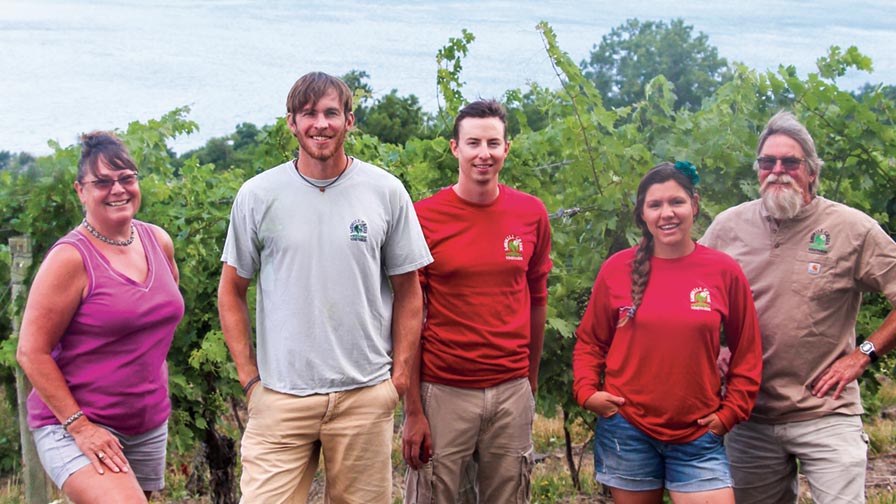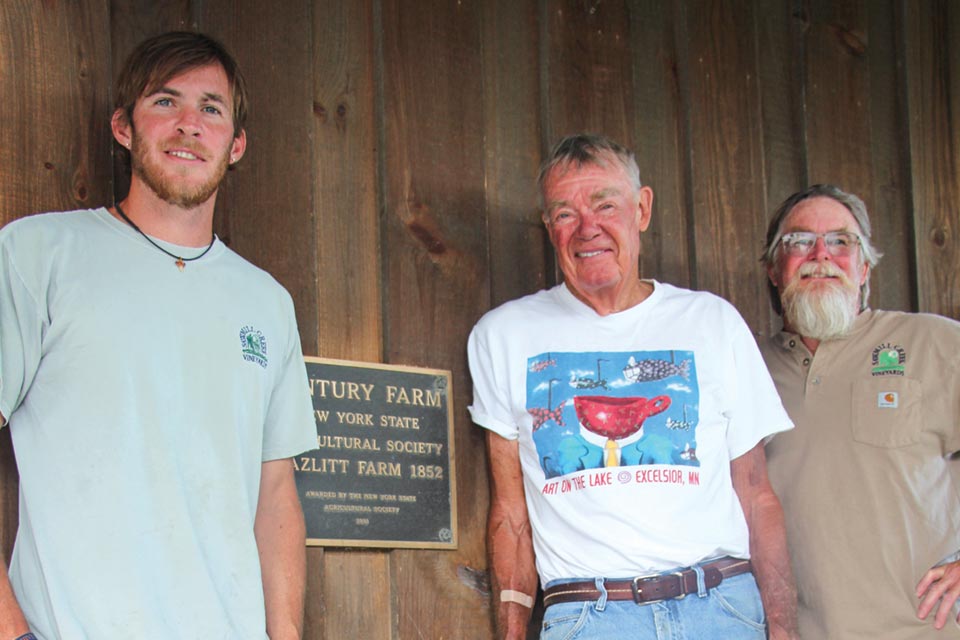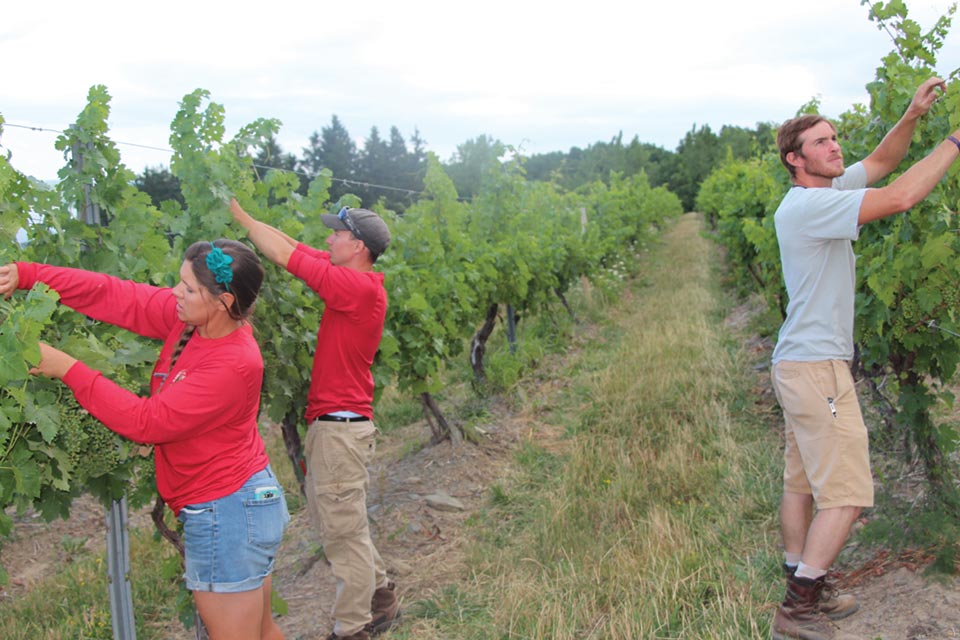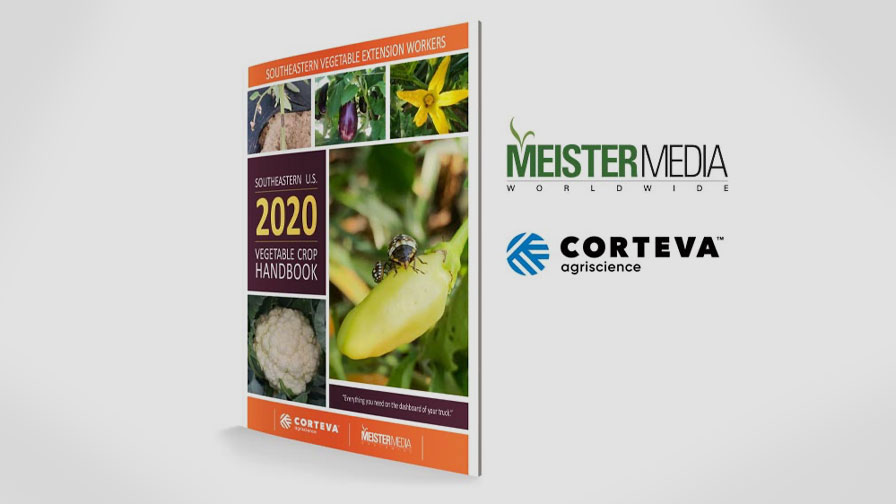Vinifera Finds A Home In The Finger Lakes

The team at Sawmill Creek Vineyards which includes Tina Hazlitt, Jason Hazlitt, Ryan Yaskulski, Courtney Griffin, and Eric Hazlitt take great pride in their vineyard, knowing their customers have come to depend the vineyard’s attention to detail. (Photo credit: Christina Herrick)
The Finger Lakes in New York is a sight to see. With sloping hills of limestone and picturesque lakeside views, it’s no surprise it’s a tourist destination, with more than 20 million visitors flocking to the area annually and spending approximately $2.9 billion during their stay.

Jason, Jim, and Eric Hazlitt are the seventh-, fifth-, and sixth-generation of Hazlitts to grow grapes in the Finger Lakes on the Family’s Century Farm, which received the designation in 1991. (Photo credit: Christina Herrick)
The wine industry is a big draw, with more than 9,393 acres of vineyards planted in the microclimates of the 11 finger-shaped lakes. These vineyards produce more than 54,600 tons of grapes a year for the 119 bonded wineries in the Finger Lakes.
Vitis vinifera varieties have a storied past with the region which was once predominantly planted with ‘Concord’ grapes, thanks to Dr. Konstantin Frank. Frank introduced vinifera to the region in the 1960s, showing the varieties could grow in a cool, wet climate. Frank’s forward-thinking attitude toward planting was continued with Hermann Wiemer, who established early plantings of ‘Riesling,’ further moving the Finger Lakes wine industry forward in the 1970s and 1980s.
In fact, the Finger Lakes American Viticultural Area (AVA) is the largest wine-growing region in New York, established in 1982. The AVA includes Canandaigua, Cayuga, Keuka, and Seneca lakes. Cayuga and Seneca lakes are officially recognized as their own distinct AVAs.
‘Riesling,’ ‘Pinot Noir,’ ‘Chardonnay,’ and ‘Cabernet Franc,’ are among some of the favored plantings in the area. The Finger Lakes AVA boasts more than 850 acres of ‘Riesling’ which produces more than 220,000 cases of wine each year. This area is also home to 220 different ‘Riesling’ brands. Although ‘Riesling’ may take the cake, varieties such as ‘Gewürztraminer,’ ‘Pinot Gris,’ and ‘Lemberger’ are also popular.
The Variety Specialist
Sawmill Creek Vineyards in Hector, NY, overlooks Seneca Lake. This vineyard is known for varieties not typically planted in the region, after fifth-generation grower Jim Hazlitt began converting his vineyard from ‘Concord’ to varieties never planted before in the Finger Lakes, thanks to world travel.

The Hazlitts were the first to plant ‘Albarino’ in the Finger Lakes. (Photo credit: Christina Herrick)
“He’d try wines and come back and plant one or two rows to see if it would grow here,” says Jim’s son, Eric Hazlitt.
“It was out of survival,” Jim Hazlitt says, noting the change in the ‘Concord’ prices prompted him to explore other varieties.
Sawmill Creek currently has about 80% of its 85-acre vineyard planted with vinifera varieties, and about 20% with French-American hybrids.
“The biggest challenge with a new variety is not knowing if it will handle the temperatures,” Eric Hazlitt says.
Although Seneca Lake, the deepest of the 11, can provide insulation to the harsh winters, Hazlitt says temperatures can dip down to 0°F or even as low as -9°F, and that can challenge some of the vinifera varieties.
Temperatures in Hector have been too cold to successfully grow ‘Sangiovese,’ which most people know as ‘Chianti,’ Tina Hazlitt, Eric’s wife, says. The trouble, she says, is wineries still want the difficult varieties, telling them “don’t rip it out.”
‘Pinot Noir’ is one Tina Hazlitt calls a ‘heartbreak grape.’
“It takes a lot of work — $5,000 per acre — for management. We don’t get paid enough per ton and it’s hard to get high tons per acre,” she says.
The Hazlitts have also been challenged by ‘Vignoles,’ which is prone to noble rot.
“They look beautiful one day, and the next they don’t,” says Eric Hazlitt.

Courtney Griffin, Ryan Yaskulski, and Jason Hazlitt tuck vines into trellising. Aside from machine hedging, vine management at Sawmill Creek Vineyards is done by hand. (Photo credit: Christina Herrick)
The Finger Lakes’ Many Firsts
Sawmill Creek is known for the popular varieties that sell well. In fact, the vineyard has many firsts — such as planting ‘Pinot Blanc,’ ‘Syrah,’ ‘Verdejo,’ and ‘Albarino.’
“We took out ‘Pinot Noir’ to make room for ‘Albarino,’” Tina Hazlitt says.
Some of the ‘Pinot Blanc’ vines at Sawmill Creek are more than 30 years old, too.
The Hazlitts’ vineyards are planted on the shore of Seneca Lake, giving them the enviable advantage of being able to scout their vines from a boat.
On a holistic level, the Hazlitts are known for the care they take with their vines, grapes, land, and lake.

Jason Hazlitt uses a machine hedger to ensure the canopies are growing straight and have the proper light. (Photo credit: Christina Herrick)
“We don’t use a lot of fertilizer because we don’t want it to end up in our lake,” Tina Hazlitt says.
The majority of their vines are on the Vertical Shoot Positioning training system (VSP). Maintenance is done by hand — hand training, hand pruning. In fact, a longtime customer from the Hudson Valley and Catskills wants the ‘Chardonnay’ and ‘Cabernet Franc’ grapes handpicked, too.
The Hazlitts are happy to oblige, knowing their customers have come to depend the vineyard’s attention to detail.
“My dad set a good standard for growing quality fruit,” Eric Hazlitt says. “He has a serious passion, and it’s hard to keep up.”










